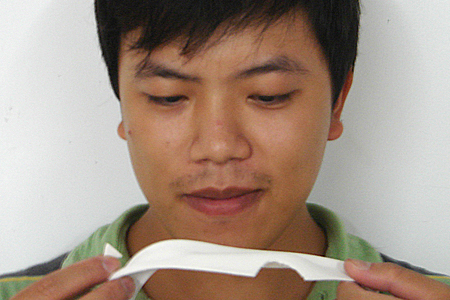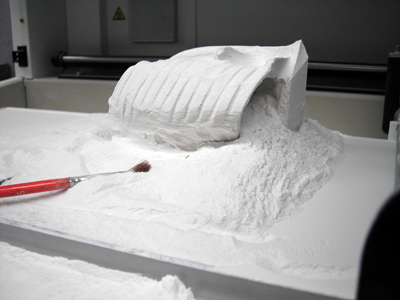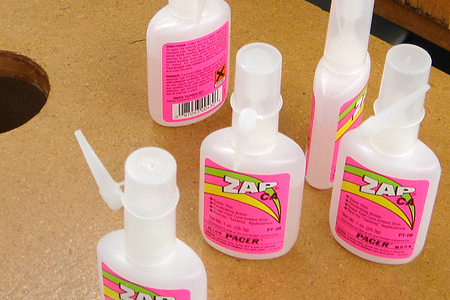anchor
Hitting the Powder- 3d Printing 101

I thought Jtravis's post on vacuum forming was pretty interesting so I'm going to run through the same description for 3d printing. Along with the CNC mill and vacuum former the 3d printer is one of the major modeling devices here.
It begins with a digital model in Rhino. Since Rhino is a surface modeler, a major chore is to thicken the model considering the final scale. Typically printing below a 1/16" thickness is a roll of the dice (unless your Austrian). If a double surface isn't modeled then it will read as one solid object as oppose to a hollow object which is usually more efficient. Thickening the model must also consider leaving openings to let powder inside the model out
Once thickened it has to be closed in to one enclosed surface. This is then converted from a Nurbs surface to a mesh and exported as a .STL file.
The model can be checked pretty thoroughly in Rhino as far as looking for gaps or holes but if it is really sloppy, alot of people bring it in to a notorious little program called Magics which can stitch and fill all seams.
The final program is 3d Printcorp where the object is positioned in the print bed. The max area of our printer is 8x10x8. Positioning involves an understanding of the machine's operation both to save yourself time and money.

3d Printers are powder based and operate off of two bins one for building and for supplying powder. It prints from the bottom up. Translated in to a a series of horizontal sections the printer heads (basically binding agent injectors) sweep over the build tray building one layer at a time. With each successive pass, the build tray descends until the full model is built. Typically height is the major factor in printing time. Printing times vary from one hour to 8 hours with the general rule of thumb being one vertical inch per hour. Cost at the school is now calculated based on overall time and not volume of powder or binding agent. Hopefully this doesn't lead to flatter models at UCLA.

Next is the fun part. Since the part is encased in a bed of powder it must be excavated like a a fragile fossil. When exposed to air the models tend to harden with time but the first handling is the most dangerous.


Pieces are usually cured with ultra-toxic zap glue (pink bottle) which hardens them to a safe state. From here they can be sanded and painted. -Aaron T(A)DS







10 Comments
You can also epoxy...
i'm curious as to how much exactly it costs to do this..
we don't have a 3d printer in our college of arch, but next door at the college of technology we can use their's for $5 a cubic inch.
does anyone know if sci-arc has a 3d-printer? i take it that would be free due to their awesome set-up.
What is the printing material for the printer above?? Plaster? RISD just got a 3d printer that prints in ABS plastic. No powder, but it cost btwn $9 and $12 a cubic inch including support material.
The printing material is plaster powder.
Danny, at the gsd they charge $10 per square inch
danny, sci-arc has a 3d printer, and i believe is getting 3 new ones by the end of the year. they're free if you know how to use them.
a lot of students outsource 3d prints for the convenience and peace of mind.
wow, we just got one for the undergraduate program at my school and are starting to use it next week. Im so excited about the possibilities. It is nice to see other students using the same technology. quick question, ours supposedly prints in RGB so full color models are possible, have you ever seen anything printed in color before?
The two machines we have at UCLA are both white powder only and can be expensive for larger prints. The company that makes the machines, Z Corp has shots of colored prints on their website along with metal based prints.
I'm also in the Thom Mayne studio and the few times we have met at Morphosis we've seen some really amazing high-definition prints. Just like 2d printers there are huge resolution differences. Their model for the Paris Tower was amazing. I think there are still shots on their website.
Plastic > Powder. Nothing like running the model through the dishwasher rather than excavating and reassembling all the shitty little broken pieces.
u can also model in stuff like solid works and/or top solid, and its more accurate than rhino in terms of looking for holes and stuff... i guess those 2 programs r not common for arch students, but i think they will become more important as digital fabrication starts getting more into the spotlight of the arch education... rhino is cool i actually preffer it to model, but i also know that w/top solid or solid works i would be doing more efficient fabrication... still nice post
Block this user
Are you sure you want to block this user and hide all related comments throughout the site?
Archinect
This is your first comment on Archinect. Your comment will be visible once approved.